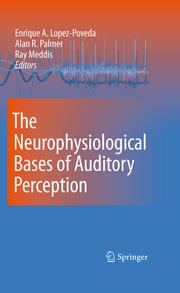Check nearby libraries
Buy this book

The International Symposium on Hearing is a triennial, highly-prestigious event where world-class scientists present and discuss the most recent advances in the field of hearing research. The symposium focuses on the relationship between auditory physiology, psychoacoustics, and computational modeling. Presented papers range from basic to applied research, and are published in book format. The books from past editions have a large demand by neuroscientists, otolaryngologists, psychologists, and artificial intelligence researchers. This meeting is highly special in that every paper is a plenary session given by invitation by a key, world-class auditory scientist. There are no poster sessions. The editors will have to choose the best 60 papers from approximately 80 submitted abstracts. Priority will be given to hot topics and to papers showing significant advances (this is almost guaranteed, anyhow, by the quality of the speakers). Papers will be submitted by invitation only and invitations will be sent only to the most-significant auditory scientists at present. Furthermore, published papers can be regarded as peer-reviewed because they will be accompanied (in print) by a full discussion between the authors and other conference attendants. This format is identical to that of preceding editions of this symposium and has proven highly successful. A full list of past conference books is given below. We will not know the list of chapters until approximately November 2008, that is 6 months before the conference (May 2009). You can get an idea of the type and format of the chapters by having a look at the books for the last two symposium editions, which were published by Springer.
Check nearby libraries
Buy this book

Previews available in: English
Showing 4 featured editions. View all 4 editions?
| Edition | Availability |
|---|---|
|
1
The Neurophysiological Bases of Auditory Perception
Sep 19, 2014, Springer
paperback
1489983716 9781489983718
|
zzzz
Libraries near you:
WorldCat
|
|
2
The Neurophysiological Bases of Auditory Perception
Oct 22, 2010, Springer
paperback
1441956875 9781441956873
|
zzzz
Libraries near you:
WorldCat
|
| 3 |
zzzz
Libraries near you:
WorldCat
|
|
4
The Neurophysiological Bases of Auditory Perception
2010, Springer
Hardcover
in English
1441956859 9781441956859
|
aaaa
Libraries near you:
WorldCat
|
Book Details
Table of Contents
Edition Notes
Classifications
The Physical Object
ID Numbers
Source records
Library of Congress MARC recordLibrary of Congress MARC record
Internet Archive item record
amazon.com record
Library of Congress MARC record
Better World Books record
Links outside Open Library
Community Reviews (0)
Feedback?| December 29, 2021 | Edited by ImportBot | import existing book |
| May 17, 2020 | Edited by ImportBot | import existing book |
| July 29, 2014 | Edited by ImportBot | import new book |
| March 28, 2012 | Edited by LC Bot | import new book |
| November 7, 2010 | Created by Nere | Added new book. |











